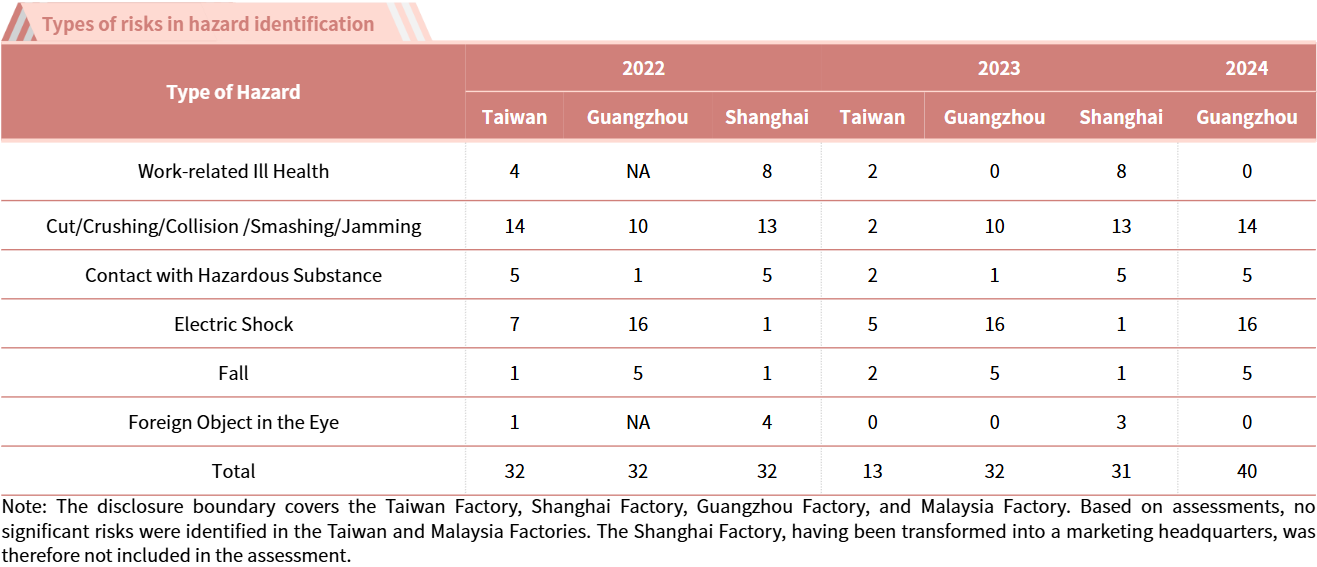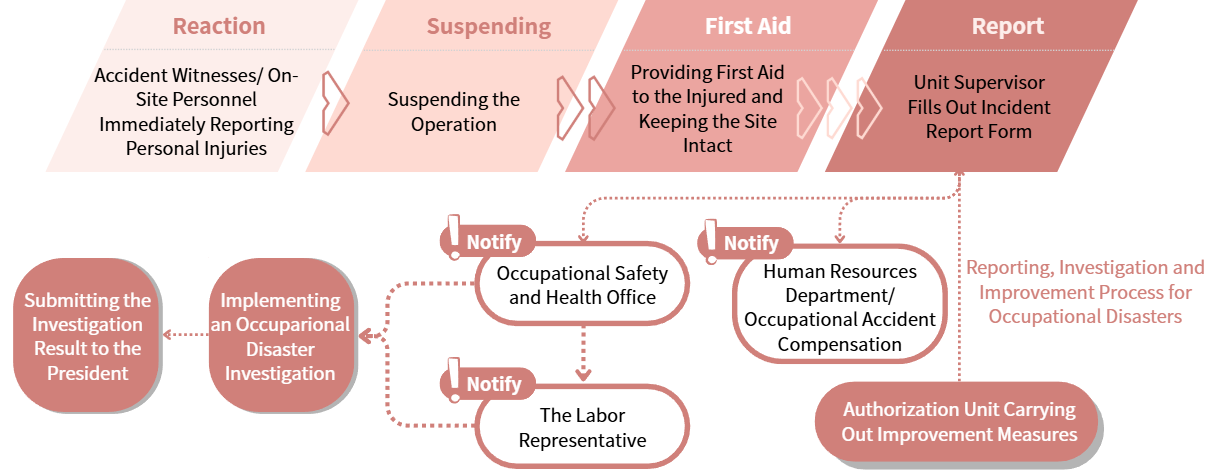Happiness and Health Workplace
Statistics and Analysis of Occupational Injuries
ABC-ATEC follows the risk assessment technical guidelines announced by the Occupational Safety and Health Administration of the Ministry of Labor. We have established procedures for hazard identification and risk assessment, and it proposes improvement or control measures for risks categorized as moderate or higher. Personnel responsible for hazard identification and risk opportunity assessment in each department have received training in risk assessment. In 2024, a total of 4 hazards were identified, and appropriate management and control measures were implemented for different risks. Currently, there are corresponding procedures to handle occupational diseases, cutting/crushing/impact/rolling, exposure to hazardous substances, electrical hazards, falls, and foreign object entry into the eyes, among others. For example, there are safety operation standards for operating vertical injection molding machines, material handling safety operation standards, and educational training for cutting and inspection of GDD90-75, etc. All identified disaster risks have corresponding measures in place, and discussions within the Occupational Safety and Health Committee are conducted to improve high-risk activities in the workplace, thereby safeguarding the health of employees. The types of hazards are indicated below:
![Hazard Identification, Risk Assessment, and Accident Investigation Hazard Identification, Risk Assessment, and Accident Investigation]()
Occupational Hazard Investigation Procedures
ABC-ATEC has formulated reporting, investigation, and improvement procedures regarding occupational disasters. Occupational health and safety personnel, alongside labor representatives, carry out an investigation where an occupation disaster occurs, and would follow up on subsequent improvements.
![Hazard Identification, Risk Assessment, and Accident Investigation Hazard Identification, Risk Assessment, and Accident Investigation]()

